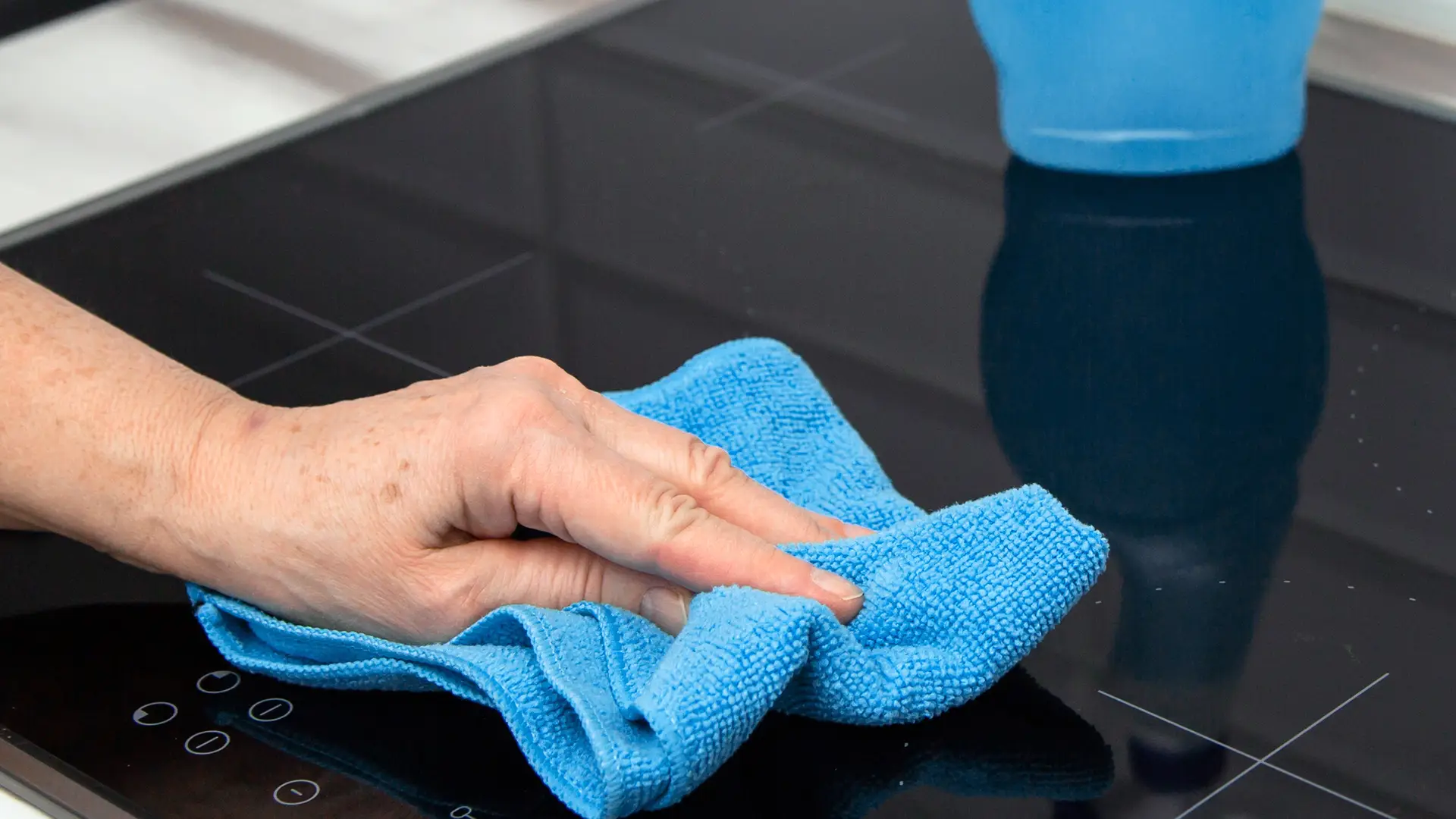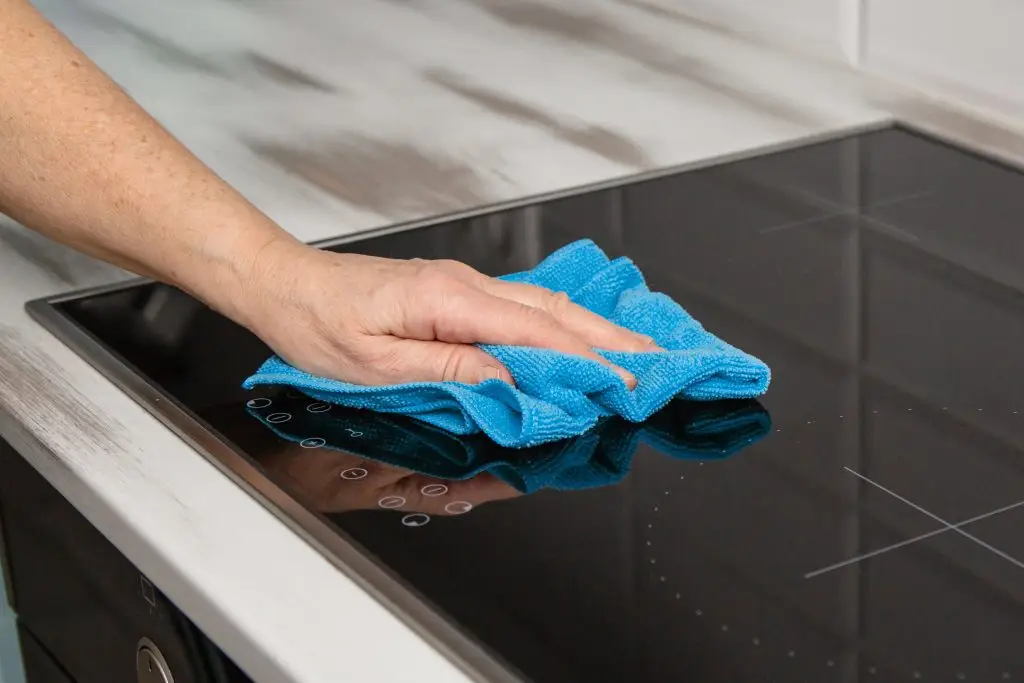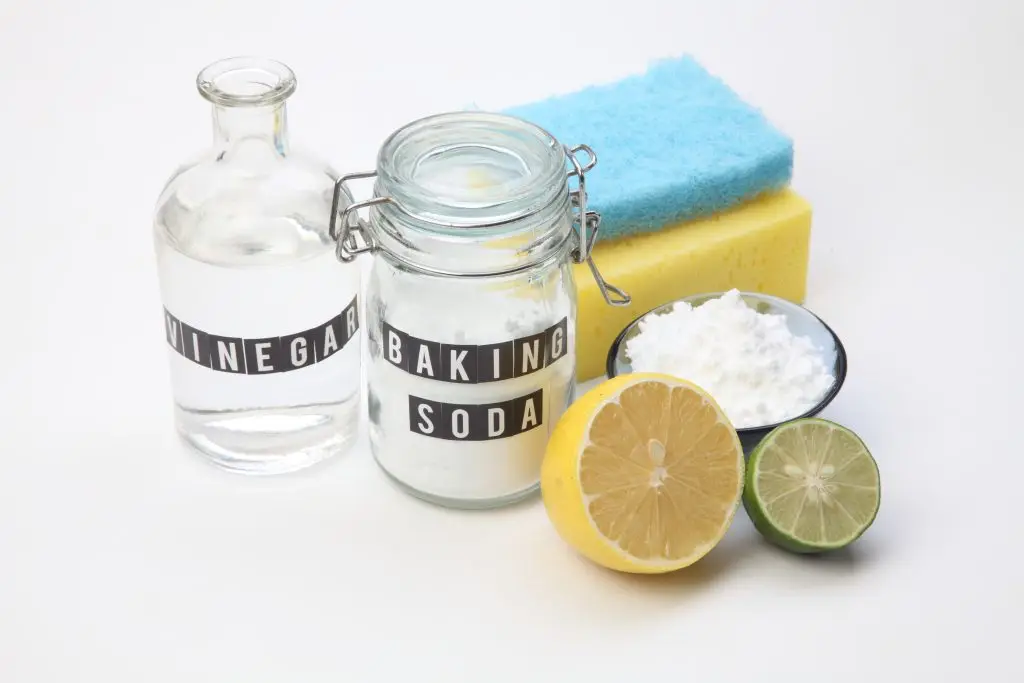
How to Clean an Induction Hob: Quick & Easy Steps for a Sparkling Finish
Induction hobs are sleek, fast, and energy-efficient—but they can quickly lose their shine if not cleaned properly. Whether you’re dealing with stubborn burnt-on stains or just wiping up after dinner, knowing the right way to clean your induction hob will keep it looking like new and performing at its best.
In this guide, you’ll discover safe, effective ways to clean your hob daily and deep clean it when needed—without scratching or damaging the surface.
What You’ll Need
- Microfibre cloth or soft sponge
- Plastic or silicone hob scraper
- White vinegar or dedicated hob cleaner
- Bicarbonate of soda (for tougher stains)
- Warm water
- Paper towel or kitchen roll
⚠️ Avoid: Steel wool, abrasive pads, or harsh chemicals—they can scratch or dull the glass surface.

Step 1: Switch Off and Let It Cool
Never clean your induction hob while it’s hot. Wait until the surface has completely cooled down to avoid the risk of burns or thermal shock from cold cleaners.
Step 2: Daily Cleaning in Just 3 Steps
- Wipe the surface with a damp microfibre cloth to remove crumbs and spills.
- Spray white vinegar or a mild hob cleaner onto the surface.
- Buff dry using a clean, soft cloth for a streak-free shine.
💡 Pro Tip: For a fresh scent, add a few drops of lemon juice to your vinegar solution.

Step 3: Removing Burnt-On Stains
Method 1: Bicarbonate of Soda Paste
- Mix 3 parts bicarbonate of soda with 1 part water to form a gentle cleaning paste.
- Spread over the stain on your glass or induction hob and leave for 10–15 minutes.
- Wipe away with a damp cloth, then dry for a streak-free finish.
Method 2: Hob Scraper
- Hold a plastic scraper at a shallow angle to protect the surface.
- Lift off burnt-on residue slowly without applying pressure.
- Wipe the area clean and polish for a smooth shine.
Method 3: Specialist Hob Cleaner
- Apply a specialist ceramic or induction hob cleaner according to the label.
- Rub gently using a soft cloth to break down stubborn marks.
- Rinse and buff with a microfibre cloth for best results.
What Not to Do: Common Cleaning Mistakes
- Cleaning while the surface is still hot
- Using bleach or oven cleaner
- Scrubbing with abrasive pads
- Pouring water directly onto the hob
Natural vs. Specialist Cleaners: Which Is Best?
| Cleaner Type | Pros | Cons |
|---|---|---|
| White vinegar | Eco-friendly, cheap, effective on light grime | Less powerful on grease |
| Bicarbonate of soda | Excellent for burnt residue, non-toxic | Requires effort and time |
| Hob cleaner | Fast, reliable, designed for glass surfaces | More expensive |

Ongoing Maintenance Tips
- Use hob covers when cooking messy meals.
- Wipe up spills immediately (once safe to do so).
- Use flat-bottomed pots to avoid scratches.
- Clean regularly to prevent build-up.

Frequently Asked Questions
Explore the CATA Appliances Blog
Your go-to hub for practical kitchen guidance, expert buying advice, installation tips, and energy-saving ideas. Whether you’re choosing a new hob, comparing ovens, or learning how to care for your appliances, our articles break everything down into clear, helpful steps designed to make every decision easier.
Learn how to clean your induction hob safely and effectively with our quick, step-by-step guide. Keep your kitchen spotless—read now!
Find out how cooker hoods remove grease from the air and keep your kitchen clean. Learn how to maximise efficiency...
Learn what freezer burn is, how to prevent it, and keep your food fresher for longer. Follow these simple tips...
Discover why your dishwasher smells and how to fix it fast. Learn easy cleaning tips to remove odours and keep...
An A++ energy rating means top efficiency and lower running costs. Learn what it means and how it helps cut...
Storing wine in a fridge can damage flavour and cork health. Learn why temperature swings matter and how to store...
Discover how self-cleaning ovens work, their pros and cons, and if they’re worth the cost. Learn about pyrolytic, catalytic, and...
Cut your electricity bills with smart washing habits. Discover 10 easy ways to reduce energy use with your washing machine....
Keeping your oven clean can be a chore, especially when it comes to tackling greasy oven racks. So it’s natural...